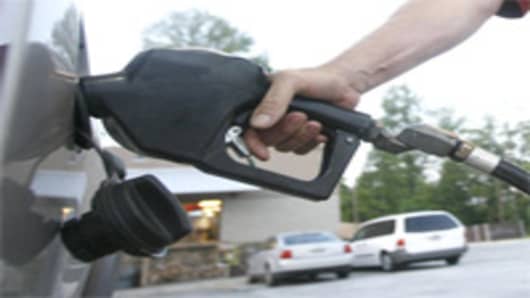Americans are driving tens of billions of miles less these days, and experts don't expect that to change even if the recent drop in gasoline prices continues.
“Given all the other economic worries we have right now, the AAA believes the price of self-serve regular gasoline will need to drop back to $3 per gallon before we can expect a meaningful upturn in miles driven and fuel consumption,” says Geoff Sundstrom, an American Automobile Association spokesman.
A continued drop in driving could have major implications for the economy, shifting not only the strategy of automakers and related industries but the federal government's policies on mass transit and road building.
The current decline in driving was triggered last November, when gasoline prices rose above the $3 threshold. Between then and mid-August, Americans drove 53.2 billion miles less than during the same period last year, the US Department of Transportation calculated.
That’s more than the entire decline in driving seen in the 1970s, when oil prices spiked sharply with the emergence of the oil cartel OPEC.
Of course, the US population was smaller back then. But analysts say the current decline is still remarkable, especially since it happened during the peak summer driving period.
The AAA predicted Friday a slight decline in travel this Labor Day holiday weekend, with 34.38 million Americans expected to travel 50 miles or more from home—down 0.9 percent, or almost 320,000 Americans, from the 34.7 million who traveled last year.
Sundstrom says the drop-off in demand for gas is caused primarily by price—not energy conservation measures—triggering less driving.
Because this price run-up has occurred in tandem with a range of other economic woes—the credit and housing crisis, along with pummeled equities markets—there is no guarantee driving will rebound even if gas does drop below $3 a gallon, he added.
Sundstrom says it is too early to tell what long-term impact higher gasoline prices might have on the sale of more fuel-efficient vehicles or the revival of mass transit or other conservation measures, such as more telecommuting and e-commerce.
But he notes that Amtrak, the nation's passenger rail line,is having one of its best years, while Internet retailer Amazon is doing well. Meanwhile, some big stores like Circuit City, which depends on people driving to the mall, is on the ropes.
Oil plunges Over $6. Where Does It Go Next? Watch video at left
While some might welcome these trends, they provoke worries among national transportation officials who depend on fuel taxes to maintain the country’s roads and bridges.
“It really makes little sense to try to upgrade our infrastructure using a revenue source as ineffective, unsustainable and unpopular as the fuel tax,” worried US Transportation Secretary Mary Peters earlier this month.
Tom Kloza, an expert at Oil Price Information Service, also thinks the decline has legs and will last at least through this year. He also thinks the decline will probably be twice as large as suggested by government statistics, which have tallied a decline of 1.9 percent year on year.
“It's down more than that, maybe its down by 3-4 percent—that's big difference when you are talking about big numbers,” he said, based on regular surveys OPIS conducts with retail gas stations.
The drop-off in demand has begun to push gasoline prices lower, but not as much the decline in crude-oil prices. Normally, gas prices rise sharply with the price of oil but retreat much more slowly.
The reasons are varied. Three-quarters of gas prices are determined by the price of crude, according the Energy Information Administration.
The balance comes from the margins of refiners and distributors, marketers and retailers, but also from consumers who tend to bargain hunt less aggressive when prices are falling, undermining retailers’ incentives to keep trimming prices, according to Kloza.
“Unfortunately for consumers, the global industry has the ability to react to lower demand by curtailing output of both oil and gasoline,” notes Sundstrom.
But he and Kloza agree that it is understandable that refiners—which have had a horrible year because they have not been able to pass through the entire crude price rise—are now feathering the margins by limiting production runs.
The average capacity utilization at US refiners is running about 85 percent, down from 90-95 percent range when demand was more robust.
But with just-in-time inventories, the real danger is a major event, such as a hurricane in the Gulf of Mexico region, where most of the country’s refining in capacity is in place.
Retail prices rose 60 cents after hurricane Katrina and a comparable disruption now would add 90 cents to the current prices, possibly more because of what Kloza considers a hardening of markets “take no prisoners” approach.
If that were to happen there would be a “huge outcry about why we left ourselves so vulnerable.”


